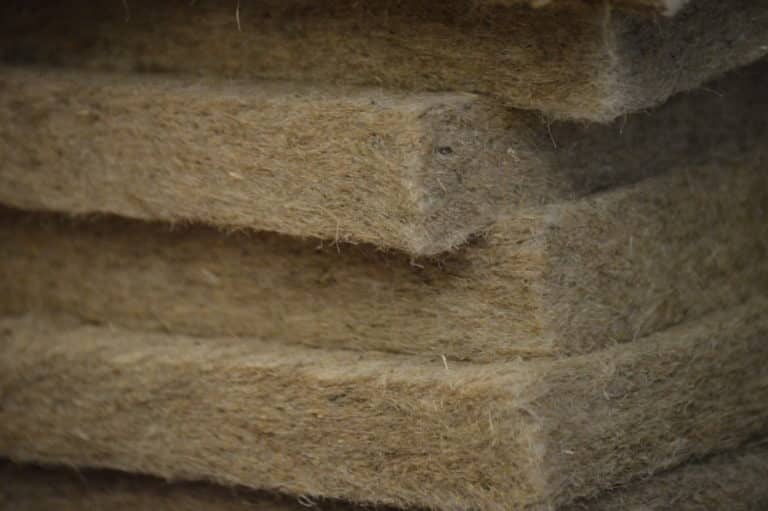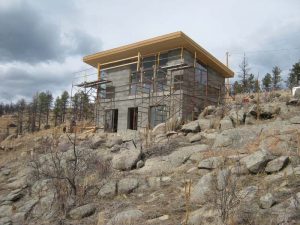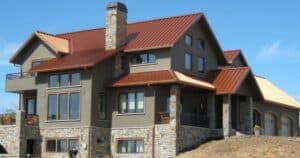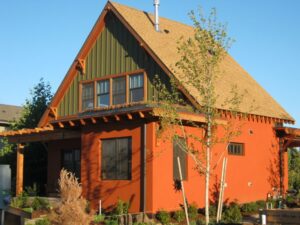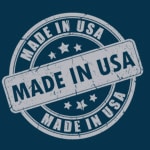Many people who want to build non-toxic homes struggle when it comes to choosing non-toxic insulation. Most of the energy used in your home is for heating and cooling. Both hot and cold air escapes easily when insulation is sub-par. There are many types of insulation, but only a couple of options if you’re looking for non-toxic insulation.
Types of Insulation
Fiberglass is the most common insulation material. As its name states, it’s made from very small glass fibers. Fiberglass insulation is formed into batts, rolls, and loose-fill insulation. Fiberglass is treated with chemicals to make it less flammable. These chemicals are known to be a harsh toxin and irritant to lungs and skin.
Foam insulation is made from the same chemicals that many types of plastic are made from, such as polystyrene, polyisocyanurate, and polyurethane. Foam insulation is often sprayed in where it expands to seal cracks, but it can be in rigid boards also. Spray foam insulation is so toxic that the EPA requires occupants to stay away from the building while it cures (and as long as the dust remains) for at least 24 to 72 hours. For those people who are sensitive to off-gassing, spray foam can cause health problems for years.
Cellulose insulation is another common type. This is made from recycled paper products that are treated with chemicals to make them less flammable. Again, the off-gassing here can be a big problem.
There are other types of insulation, but these are the most common. The best non-toxic insulation is either mineral wool or foam insulation inserts. Let’s compare the two.
Non-Toxic Insulation
If you’re wanting to build the healthiest, non-toxic home, the best non-toxic insulation is one that doesn’t off-gassing and has no toxic additives. There is no formaldehyde in any Faswall or Durable Greenbed product. Formaldehyde is commonly found in foam insulation. You can choose any of our products and be assured that there is no formaldehyde in any of them.
Mineral wool insulation
Rock wool or slag wool is also sometimes called mineral wool. this type of insulation is similar in appearance to fiberglass insulation in that it consists of spun fibers. But the fibers are made of natural stone such as basalt. The stone is sourced, melted at a high temperature, and then “spun” by high pressure blasts of air into “wool.” The wool is then coated with a mineral oil- or resin-based coating to bind it together and compressed.
Mineral wool insulation can also be made by spinning slag, a waste product from the production of steel, in a similar manner as the melted rock. It can also be made by melting a combination of natural stone and slag.
Both types of mineral wool are typically sold in batts or as loose-fill. They can be used anywhere you would normally place insulation in the home. ThermaFiber brand mineral wool insulation reaches an R-value of 3.7 – 4.2 per inch of thickness, which on the low-end is 12.95 and 14.7 on the high end. The EPA says the R-value of 3 1/2 inches of fiberglass batting is a mere 11.
Foam insulation inserts
Faswall’s ThermaFiber is a 3-inch thick high-performance semi-rigid mineral fiber board. Like the mineral wool insulation described above, mineral wool foam insulation inserts are made from all-natural material. Mineral wool foam insulation inserts have high R values and are made with 70% recycled content. ShelterWorks, the parent company of Faswall, carries the 10 PCF size, providing the most common and versatile product with high R values.
ThermaFiber is highly fire resistant and contains no fiberglass or hazardous materials. It prevents condensation, mold, and mildew, and reduces noise emission and transmission. Other types of rigid foam insulation can be made of polyisocyanurate insulation, often called polyiso. This is a closed-cell, rigid foam board insulation that can be cut to fit. (The difference between open and closed-cell insulation is that open cell foam is softer and more flexible, while closed-cell foam is more rigid.) Foam insulation inserts can be used anywhere you would use insulation in a home, but is commonly used on the exterior side of sheathing.
R Value of Faswall Walls With Insulation
Insulating values for a concrete filled Faswall wall with 3-inch mineral wool inserts, interior plaster, and exterior stucco reaches R 21 (U-Value .048). The same wall with 3-inch polyiso foam inserts instead reaches R 25.5 (U-Value .039). A Faswall wall with NO additional insulation reaches a value of R 11.8 (U-Value .085), which is basically the same as that of the mineral wool insulation by itself.
Main Takeaways
When you’re building with Faswall, which is already highly insulating, high performing, non toxic, fire resistant, mold resistant, and pest resistant, choose a non-toxic insulation. The result is a highly insulating wall with no off-gassing, for a non-toxic home environment.

